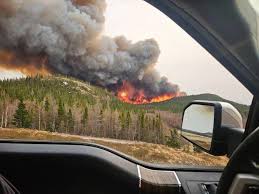The Towering Legacy of Churchill Falls
Nestled in the rugged terrain of Newfoundland and Labrador lies the Churchill Falls hydroelectric project, a name that evokes both pride and controversy in the hearts of local residents. When it began operations in 1971, it was touted as a beacon of renewable energy, producing nearly 5,428 megawatts of power—enough to supply several provinces. However, its legacy cast a long shadow, raising questions about economic benefits, environmental impacts, and the rights of Indigenous communities.
A Community Torn
For those living in the shadow of the towering Churchill Falls, the benefits of this monumental project are a mixed blessing. On one hand, the local economy has seen some development, yet many community members express a sense of loss over cultural heritage and environmental degradation. “We’ve sacrificed so much for this power, and it’s hard to see the benefits trickle down to us,” says Dorothy P., a lifelong resident of nearby Happy Valley-Goose Bay. “It feels like our land has been taken from us, and we’re left watching from the sidelines.”
Indigenous Rights and Environmental Concerns
The hydroelectric project is situated on traditional lands of the Innu and Nunatsiavut people. Historically, the government signed agreements without the consent of these Indigenous groups, leading to years of legal battles and strained relationships. Recent efforts have been made to rectify this, with both parties engaging in dialogue aimed at improving compensation and ensuring Indigenous voices are prioritized in future discussions about resource management.
Environmental advocates have also raised alarms over the project’s ecological footprint. Changes in water levels have disrupted local fish populations and altered the region’s delicate ecosystem. As the climate crisis looms, concerns about sustainability and conservation have fueled the call for more responsible energy practices in the region. A recent poll indicated that 67% of Newfoundland residents support a transition towards greener energy while prioritizing Indigenous rights.
The Future of Churchill Falls
The Churchill Falls project generates significant revenue, and as power demand continues to rise, discussions around expansion are becoming increasingly urgent. Proposals for new infrastructures, such as a transmission line to connect with other provinces, are under consideration. However, many community members remain cautious, wary of repeating past mistakes. Some locals advocate for a collective vision that encompasses both economic advancement and respect for cultural identity.
A New Era of Engagement
As conversations evolve, the local sentiment appears to be shifting towards collaboration rather than confrontation. Social media platforms have become hotspots for discussion, with hashtags like #FairShare and #ChurchillFalls echoing the sentiments of those seeking justice. Advocates argue for a balanced approach, one that allows for development while ensuring that local communities and Indigenous voices are not drowned out by the push for profit.
A Hopeful Outlook
The legacy of Churchill Falls is undeniably complex, intertwined with stories of resilience, hope, and struggle. For many residents, this project is not just about energy; it’s about identity, community, and the delicate relationship they have with the land. As we move forward, the potential for reconciliation and sustainable development exists, but it requires intentional effort and genuine collaboration from all stakeholders involved.

